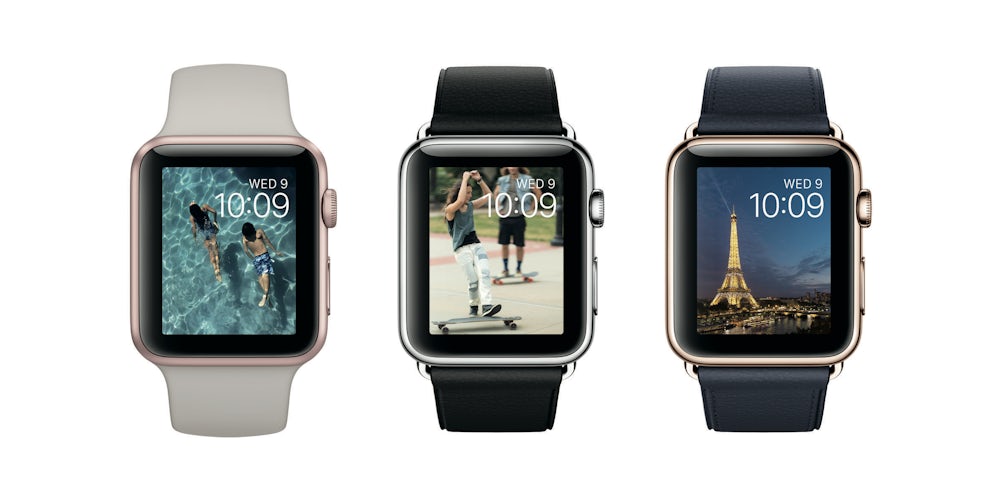Luxury watches, business tablets and 3D touch: How Apple plans to stay ahead in mobile
At last night’s (9 September) eagerly anticipated launch event, Apple unveiled its latest range of products, including the iPhone 6s and iPhone 6S+, WatchOS 2, Apple TV as well as the new iPad Pro. But what do they mean for marketers and how is Apple boosting its appeal to brands?

1) The iPhone’s new 3D touch sensors
When it comes to the brand’s latest iPhones, the biggest excitement isn’t focused on the addition of a rose gold coloured device but the new 3D touch sensors.
The sensors are essentially pressure sensitive controls, which allow users to highlight hidden content. For example, pressing down hard on a screen can bring up menu options that don’t appear if pressed lightly.
For brands, this feature can provide exciting opportunities. For example, retailers might be able to showcase a list of products and customers can then press down on an item to see more information.
But it is up to app developers and marketers to take full advantage of this, according to Tim Coulling, senior analyst at Canalys.
“Apple have shown the technology that they will be using, but it’s now up to the developers, brands and marketers to incorporate that,” he says.
Facebook, Instagram, Dropbox and Tencent are among the first brands to support 3D Touch.
While the phones themselves haven’t seen huge updates, as mobile becomes the primary touchpoint for brands Apple will only become more important. Marketers must look at how they can best reach consumers on this platform, making use of new technology but also being aware of technology such as ad blocking, which Apple is introducing with the latest version of its iOS operating system.
“What matters for marketers is reach and the ability to deliver a branded experience that serves their customers’ expectations. Apple will maintain its leadership in the mobile ecosystem. In particular, ad blocking and deep-link features will force marketers to think of delivering utility to service their customers in their mobile moments,” says Thomas Husson, VP principal analyst marketing and strategy at Forrester.
2) The Apple Watch goes luxury
The Apple Watch has had its fair share of negative publicity, criticised for poor battery life and with people questioning whether is has been the sales success the industry expected. Apple will hope to put a stop to that with the second iteration of the device.
Launching on 16 September, Apple has partnered with Hermes and added more colours and bands to the range, seemingly targeting a luxury market.

There are currently 10,000 apps available for the Apple Watch and Facebook Messenger will soon be added to that list.
It is still early days for the Apple Watch and it still doesn’t offer the reach most big brands are looking for. However it provide a good opportunity for brands with advanced mobile strategies looking to innovate and be first movers in the nascent but growing space.
“With WatchOS2, the Apple Watch takes the first steps in becoming a standalone platform,” says Husson.
“Marketers should work with app developers or their agencies to take advantage of the sensors on the device and to build their own ‘complications’ — mashups of data that would be pertinent for a given user at a given time.”
3) Going after the professional tablet user
Apple also announced a larger iPad with a 12.9in screen and released its own version of Microsoft’s Touch Cover with The Apple Smart Keyboard.
At the event, Microsoft made a surprise demonstrated its Office suite on iPad Pro on stage, while Adobe showed off new additions to its creative applications.
With the iPad Pro, it seems that Apple is going after the enterprise market and working professionals. Apple is following the lead Microsoft has taken with its Surface tablet and is marketing its new device as a business tablet that can replace the laptop, a shift for the brand.
Forrester suggests the move could pay off and that in four years time Apple will have a 30% market share in the professional segment.
“Bringing together the keyboard and tablet with a larger screen is an interesting value proposition for a market segment that’s growing strongly,” explains Francisco Jeronimo, research director European mobile devices at IDC .
4) How Apple is using apps to link its world
Last but not least, Apple unveiled the latest version of its Apple TV, which includes voice search, touch surface remote control and, for the first time, a dedicated app store.
Most smart televisions have few applications, but Apple is hoping to change this. Apple TV comes with a new operating system called TVOS, which is similar to its old iOS system. Apple wants developers to build apps for it like they do for iOS.
This should provide interesting opportunities for brands, in particular the gaming sector. Apple will be bringing console games to Apple TV and consumers can use their iPhones as consoles by connecting to the device using Bluetooth.
Apple is also looking to make shopping a social experience within people’s homes.
“With this product, Apple is building its foundations for the future,” IDC’s Jeronimo says.
“By bringing developers to Apple TV, they are offering a strong value proposition.”






